If you purchase an independently reviewed item through our site, we earn an affiliate commission. Read our affiliate disclosure.
The honeybee might be a target of a number of pests but this number is relatively low and manageable. Honeybees in North America and other parts of the U.S. play an important role, economically and ecologically. It is almost impossible for nature to thrive in the absence of bees and other pollinators. Unfortunately, honeybee numbers have been declining over the years for a number of reasons. Pests and diseases are particularly a major threat to bees and hence the need for beekeepers to adopt effective, safe, economical, and sustainable ways of dealing with them. This is what is referred to as IPM, or integrated pest management. The concept and application of integrated pest management are widely accepted in beekeeping operations since it provides a long-term solution for managing pests.
What is Integrated Pest Management?
Integrated pest management is regarded as a science-based and long-standing approach in decision-making that aims to identify and reduce risks from pests and pest-management strategies. It encompasses the best approaches employed in making use of pest biology, environmental insights, and utilization of existing technology in the control of pests using the most economical means, without posing any risks to resources, people, property, and environment.
The concept of integrated pest management is applied in various areas including public areas, wildlands, commercial agriculture, and residential areas. It aims to protect people and resources from pests by not relying purely on chemical control measures. Experts recommend the adoption of integrated pest management in any and all beekeeping operations. It considers a wide spectrum of pest management approaches, decisions, and controls.
The History of Integrated Pest Management
The history of integrated pest management can be traced back to the early days, precisely post-World War II. This is the time when artificial insecticides were introduced in the U.S. These synthetic chemicals were widely accepted and used by growers given their efficacy in countering pests. It made it possible to reduce pest populations to manageable numbers.
Later on, entomologists were able to identify the risks posed by these insecticides. Natural predators were not spared by these seasonal spray programs and that meant additional applications to counter the pests later on. Consequently, the overuse of chemicals affected other living organisms including pollinators such as honeybees and bumblebees.
The concept termed “supervised pest control” was then born in California and other cotton-producing states such as Arkansas. This concept was developed by entomologists in an effort to minimize pesticides based on the concept that considered the total number of targeted insects visa vie their natural enemy populations.
After that, the term “Integrated Control” was coined in California with entomologists using the term to identify a mix of the top chemical and biological controls for the majority of pests. Its primary aim was to make use of chemical controls that had the least effects on biological controls. The grower was required to only use chemical controls when pest populations reached the economic threshold. This meant applying chemical solutions to keep pest populations below the economic injury level.
“Integrated pest management” came into the picture after that and this was more comprehensive unlike the concept of “Integrated Control”. It is an umbrella term that considered all classes of pests and some other controls that can be employed in addition to the chemical and biological measures. A number of these included physical, genetic, and mechanical. All relevant sectors that included entomologists, plant pathologists, weed scientists, and nematologists were directed to accept and apply the concept of integrated pest management in 1972.
Presently, Integrated Pest Management (IPM) covers pests, diseases, and weeds that affect sectors such as homes, animals, commercial buildings, landscapes, and many others. The concept is applied in agriculture, schools, dairies, beekeeping, poultry operations, golf courses, and many others.
The concept of integrated pest management has been in use in the beekeeping industry from its early adoption and has led to the decreased use of pesticides. It particularly gained massive popularity in the 1980s and 1990s, a period when the term integrated pest management became common in most beekeeping meeting programs. To date, IPM has been widely accepted and modern-day IPM principles are commonly applied in beekeeping.
What Integrated Pest Management Adoption Means to Beekeepers
Integrated pest management (IPM) being a pest, disease, and parasite prevention strategy means that the beekeeper utilises multiple techniques that are in line with the ecological context of the situation at hand. The bottom line is to bring these honeybee pests and parasites to a manageable level.
Integrated pest management in itself is not a “one size fits all” approach but rather means adopting strategies that fit the specific situation. This will translate to the use of biological controls, cultural practices, habitat manipulation, minimizing chemical treatments, and raising resistant strains of bees. Chemical usage is adopted as a last resort in this case.
Integrated pest management, therefore, means the following to the beekeeper:
- The majority of the honeybee colonies are not dependent on heavy chemicals.
- Strategies employed do not lead to the development of pests that are resistant to treatment.
- A long-term and sustainable solution is being adopted and not a temporary fix to the problem at hand.
- The least invasive interventions are prioritized to minimize the negative impact of the manipulations.
Integrated pest management makes use of the prevention, identification, and monitoring of pests before considering the use of chemical treatments. The ultimate goal here is not to completely eliminate the pests but rather to reduce their population to a manageable level. This mimics what feral bees employ in nature, where they survive and thrive without help from humans. Pests are never eliminated entirely in nature but rather suppressed naturally through a number of defense mechanisms.
Integrated Pest Management: Knowing the Honeybee Stressors
There exist a number of stress sources that cripple honeybees. Proper management of these stressors can help the beekeeper raise stronger and more highly productive colonies that are in a better position of taking care of themselves. A number of these include:
1. Parasites and Pathogens
Parasitic mites and other harmful pathogens pose a serious risk to honeybees. They act as vectors of diseases and viruses that can easily wipe out entire honeybee colonies. Making this list are bacteria and fungi that greatly impact honeybee health. Beekeepers have for many decades employed chemical treatments to counter bacteria and mites. Unfortunately, excessive use of medications results in mites and bacteria that become resistant, making it more challenging to control them.
The use of medications also affects beneficial microbes that live in the honeybee digestive system. These microbes help bees counter pathogens and the use of medications negatively affects these beneficial microbes.
On top of the list of the parasites that target honeybee includes:
Varroa Mites (Varroa destructor and V jacobsoni)
|
Tracheal Mites (Acarapis woodi)
|
Tropilaelaps Mmites (T mercedesae and Tropilaelaps clareae)
|
The American Foulbrood
|
Black Queen Cell Virus
|
Small and large hive beetles
|
Sacbrood Virus
|
Greater and Lesser wax moths
|
Nosemosis (N Ceranae and N apis)
|
The European foulbrood ( Melissococcus plutonius)
|
Braula Flies (Braula coeca)
|
Chalkbrood disease (Ascosphaera apis)
|
2. Poor Honeybee Nutrition
Honeybee colonies require an abundant supply of quality food for their survival. The absence of quality food within the locality will therefore affect the honeybee’s health. Successful colonies demand a high floral diversity throughout the year and this is essential for raising healthy colonies.
The increase in the number of heavily managed landscapes has had a negative impact on the available natural environments for honeybees. Urbanization has also reduced the available floral resources yet the number of urban beekeepers keeps increasing by the day.
More so, commercial agricultural areas have been on the rise. These may offer abundant forage but the floral diversity is limited and honeybees are exposed to pesticides. All these factors add up and pose a serious risk to honeybees and should be catered for in integrated pest management strategies.
3. Bad Beekeeping Practices
This is another factor that is a major cause of colony stress. Beekeepers that do not make conscious choices when raising bees worsen colony stress from various sources such as pests and diseases.
Beekeepers should actively monitor and manage hive pests and diseases in all seasons. They should also ensure the colony is provided with sufficient and good quality forage. If need be, colonies should be given supplement food, especially during periods of nectar and pollen shortages. Furthermore, hives should be placed in locations that are safe from pesticide drift.
Integrated pest management strategies focus on beekeeping practices that decrease stress on honeybee colonies. This means beekeepers are encouraged to make conscious decisions in all aspects of their practices.
4. Pollution and Pesticides
Commercial agriculture and urban areas expose foraging bees to harmful chemicals. The severity of risk exposure to such chemicals depends on the specific ingredients, application procedures, formulation, and drift to non-target areas. Furthermore, honeybee products such as wax, pollen, honey, and propolis, to name a few, might be exposed to contamination.
The beekeepers themselves also pose a risk to bees whenever they apply chemicals in the treatment of pests in the beehive. And apparently, the highest level of detectable contaminants comes from the products that beekeepers use. It is the overuse of antibiotics and miticides in hives and the misuse of legal products that pose the biggest risk to honeybees. More so, off-label and non-approved chemicals when used affect honeybee health.
5. Climate and Weather
Prevailing weather conditions and climate contribute to the stress experienced by honeybee colonies. It affects the availability of food to colonies since it directly affects bloom periods. Of particular concern is the long-term change in weather and climate resulting from human activities. This impacts resource availability to honeybees and directly affects colony health.
Extremely cold and wet months limit forager bee movement in the search for nectar and pollen. The bees are unable to fly due to wet wings and this leads to over-dependence on the insufficient food stores in the colony. The bees will also consume more food during prolonged droughts resulting from climate change.
Abnormal winter months, where temperatures rise trigger honeybee colonies to produce more brood and bee activity increases. At this time resources are limited and depleting the winter food stores will increase winter mortality in honeybee colonies. A consideration of the weather and climatic conditions is a part of practical integrated pest management solutions aimed at minimizing the impact of factors outside the control of the beekeeper.
6. Honeybee Predators
These refer to small and large predators that target honeybees. Some of the pests encountered by the beekeeper include the following:
- Bears – once they discover a honeybee colony they will keep coming night after night to gorge on brood and honey. They destroy hives causing substantial losses to the beekeeper. Learn how to protect your apiary from bears.
- Livestock – these include large livestock such as cattle, goats, and horses that are not ideally pests but might damage beehives. They might knock over hives accidentally or disturb bees leading to an aggressive response from the bees.
- Birds – a number of birds such as shrikes, thrushes, kingbirds, mockingbirds, titmice, martins, and many others consume bees. They might eat a queen bee during mating flights leading to more losses.
- Toads and frogs – these amphibians feed on insects including honeybees. They are general insect feeders and might camp outside the hive as they devour unsuspecting bees.
- Small mammals – these include skunks, raccoons, opossums, and others that attack honeybee colonies. They feed on bees, food stores, and broods causing huge losses.
Sustainable control measures should be employed in the control of honeybee predators.
The 4-Tier Approach of Integrated Pest Management in Beekeeping
Under integrated pest management, beekeepers follow a four-tier approach when it comes to pest management in beekeeping. These include the following:
1. Determine action thresholds
This means before any pest control measure is adopted, an action threshold is determined. This refers to the point at which the pest population or the existing environmental conditions dictate that action should be taken against the pests. The presence of a few pests does not always mean control is required. The point at which pests pose an economic threat should be the guide when making future decisions on pest control.
2. Monitoring and identifying pests
The integrated pest management approach affirms that not all insects, living organisms, and weeds are pests that should be controlled. Some of these are harmless and others beneficial. IPM programs or strategies recommend the beekeeper monitor and identify pests accurately. This will ensure the correct control decisions are made with consideration of the action thresholds. Such an approach guarantees the right decisions are made and that pesticides are not used when not really needed. It also ensures the right pesticide is used if necessary.
3. Prevention
The main focus of integrated pest management is on prevention and not necessarily on the complete annihilation of a pest or parasite. It aims to manage beehives, lawns, crops, and indoor spaces in a manner that prevents pests from posing serious risks. This might mean employing less harmful controls such as cultural methods since they are highly effective and cost-efficient. They are also friendly to humans, other living organisms, and the environment.
4. Control
This is the final step in integrated pest management where the proper control method is selected while considering the other factors. The most effective and less risky controls are prioritized and these include methods such as the use of pheromones to disrupt mating, weeding, trapping, and others. If these methods are ascertained not to deliver results, then additional pest control methods are applied. This could mean the use of non-specific pesticides as a last resort.
Integrated Pest Management Strategies for Beekeeping
These comprise primarily the recommended strategies for controlling pests, parasites, and diseases in beekeeping. They include the following:
1. Genetic Control
As implied by its name, this encompasses the strategies that target the pest’s genetic makeup. It involves the use of sterilized or incompatible individuals to help reduce or completely wipe out the pest population. Such a strategy was employed during the Screwworm Eradication Program in the early 1930s and it was successful. The screwworm was a huge threat at the time and it fed on the living tissues of warm-blooded animals in most regions of Central America, Mexico, and the U.S. It affected both domestic and wild animals and posed a serious risk to these animals. Scientists attached to the USDA at the time came up with the idea of releasing sterile males of the screwworm instead of using pesticides. This proved to be successful in eliminating the worm.
In 1997 queen bees that were resistant to varroa mites were imported from Russia into the U.S. in an effort to curb the mites. The queen bees also exhibited some tolerance to the common small hive beetle. The use of varroa-sensitive hygienic bees has also proven to help curb varroa mites within the U.S.
Since not all beekeepers are able to afford mite-resistant stocks, it is wise to get local bees since they have adapted to their locality and is easier for such a colony to survive and thrive there. This will make your work much easier as the beekeeper given the fact that the bees are already familiar with their environment and its threats.
Additionally, constantly monitoring colony responses to pest infestation can give cues on what works or might work. For instance, a colony that is more vulnerable to mite infestations can be supported by bringing in a hygienic or locally adapted queen. You might as well acquire a varroa-resistant stock once you can afford it.
2. Biological Control
These encompass the controls that comprise beneficial insects and pathogens that allow for the safe control of pests in beekeeping. Some of the measures that have worked in the past included the use of Bacillus thuringiensis products in the control of wax moths.
Soil nematodes also known by the name Heterorhabditis indica have been successfully employed in the control of small hive beetle in the U.S. The nematodes target the small beetle when they enter the soil to pupate. The Solenopsis invicta also known by the name the fire ant has also been used to control the wax moth in stored comb. It also targets the small beetle and can help control them.
The selection of a genetically superior stock of bees that can tolerate diseases and mites will also help keep mite numbers and diseases low. This will boost the survival rate of honeybee colonies that are raised from a strong biological line.
3. Habitat
Honeybees have been in existence long before humans thought of domesticating them. Therefore beekeepers can borrow a few ideas from the way honeybees survive in the wild. Feral bees choose tree hollows and holes in rock crevices for a reason. These homes have proven to exhibit the lowest number of mite loads.
Studies have been done to determine the choice of nest for feral bees and even though humans are unable to replicate these exactly, it is still possible to come up with a few elements in beehives that can have a positive effect on the honeybee colony. Some of these include smaller nest cavities, allowing honeybees to build natural combs, allowing bees to swarm, and giving bees the freedom to accumulate propolis.
4. Physical Control
Beekeepers have been ingenious in terms of finding out what works and what does not when it comes to the control of common pests and parasites in honeybee colonies. It has been ascertained that a number of common beekeeping pests are affected by certain physical factors such as heat, cold, sound, light, carbon dioxide, ventilation, and humidity. These factors affect their activities and survival and may be used to keep their numbers low.
For instance, a common strategy for controlling the wax moth and small hive beetles in stored drone combs is through the use of freezing temperatures. Varroa mites are likewise affected by heat and exposure of the hive to the sun will help keep varroa numbers on the minimal. Exposure of the hive to the sun also helps reduce the number of small hive beetles since they rely on wet soil for procreation and drier soils affect their life cycles. You can also use light and ventilation to counter wax moths in drone combs.
5. Mechanical Control
Mechanical control measures are a part of the recommended and practical integrated pest management strategies. It involves the use of numerous mechanical control tools that help pest populations within the treatment threshold.
Mechanical controls have been used to successfully treat honeybee pests such as the small hive beetle. These can be eliminated by hand smashing, trapping, or vacuuming. Other pests such as the varroa mites can be eliminated using screened bottom boards. This allows the mites to freely fall to the ground where they are unable to climb back into the hive.
Cutting and removing drone brood will also help control varroa mite populations. The mites have a preference for the drone brood since it gives them sufficient time to develop and grow. Removal of the drone brood will therefore mean the mites with their offspring are eliminated from the colony.
6. Monitoring or Scouting
This involves a study and understanding of the honeybee pest biology and behavior. This can help control the pests without the need to use chemical options. The pests that target honeybees have a seasonal life cycle that is predictable. By monitoring these pests, the beekeeper can be able to determine the best approach to use to control the pests. Chosen programs will be focused on the time of the year when the pests are most available and easy to target.
Mites and pests are cold-blooded and therefore their development relies on temperature. There are exceptional cases, however. For instance, the case of wax moths that stays away from a warm environment. Their life cycle however slows down during winter.
As for varroa mites, they can be controlled through monitoring practices. The use of varroa mite detector boards, alcohol wash, and others help monitor and control the pest during parts of the season. Varroa mite treatment levels have been determined and can be used as a guide when dealing with them.
7. Cultural Controls
These are primarily practices that aim to reduce stress and improve the health of honeybees. It starts with the choice of the hive location to ensure hives are not only well provided with a wide spectrum of flora but also secured from any potential invasion or disturbance.
Cultural control also encompasses management decisions such as requeening, splitting, or combining hives to alter the brood population and mite populations. Breaking of brood cycle can also help counter diseases that affect the honeybee brood.
Advantages/Disadvantages of Integrated Pest Management
Here are some of the advantages and disadvantages of integrated pest management strategies in beekeeping:
Advantages
- Sustainable solution.
- Minimal use of chemicals.
- Economical solution.
- Beehive product contamination is minimized.
- Beekeeper is least exposed to harmful chemicals.
Disadvantages
- Extra time and commitment are needed.
- Multiple strategies are required to succeed.
Conclusion
Integrated pest management (IPM) is an all-encompassing strategy for managing pests, parasites, and diseases in beekeeping. It is an open strategy that makes it possible for beekeeping to be creative when dealing with these enemies of the bees. They are able to use a combination of tools that they deem fit to counter their problems or the specific situation they face. IPM is also used in dealing with other pest species, whether in the garden or those affecting a pet. IPM strategies help identify, monitor, and use well-thought-out treatments that will benefit the host, beekeeper, and the environment.
References
- https://txbeeinspection.tamu.edu/files/2018/01/IPM_honey-bees.pdf
- http://www.epa.gov/pesticides/factsheets/ipm.htm
- http://www.cotton.org/tech/pest/bollweevil/index.cfm
- http://en.wikipedia.org/wiki/Integrated_pest_management
- http://www.clemson.edu/extension/beekeepers/factsheets/honey_bee_colony_removal_from_structures.html
- http://www.honeybee.org.au/
- https://lopezuribelab.com/ipm/
- https://lopezuribelab.com/varroa-mite-monitoring/
- https://www.harbobeeco.com/measure-vsh/
What are your thoughts on this article? Leave a comment below and let us know.
 BeeKeepClub Resources and Guides for Beekeepers
BeeKeepClub Resources and Guides for Beekeepers

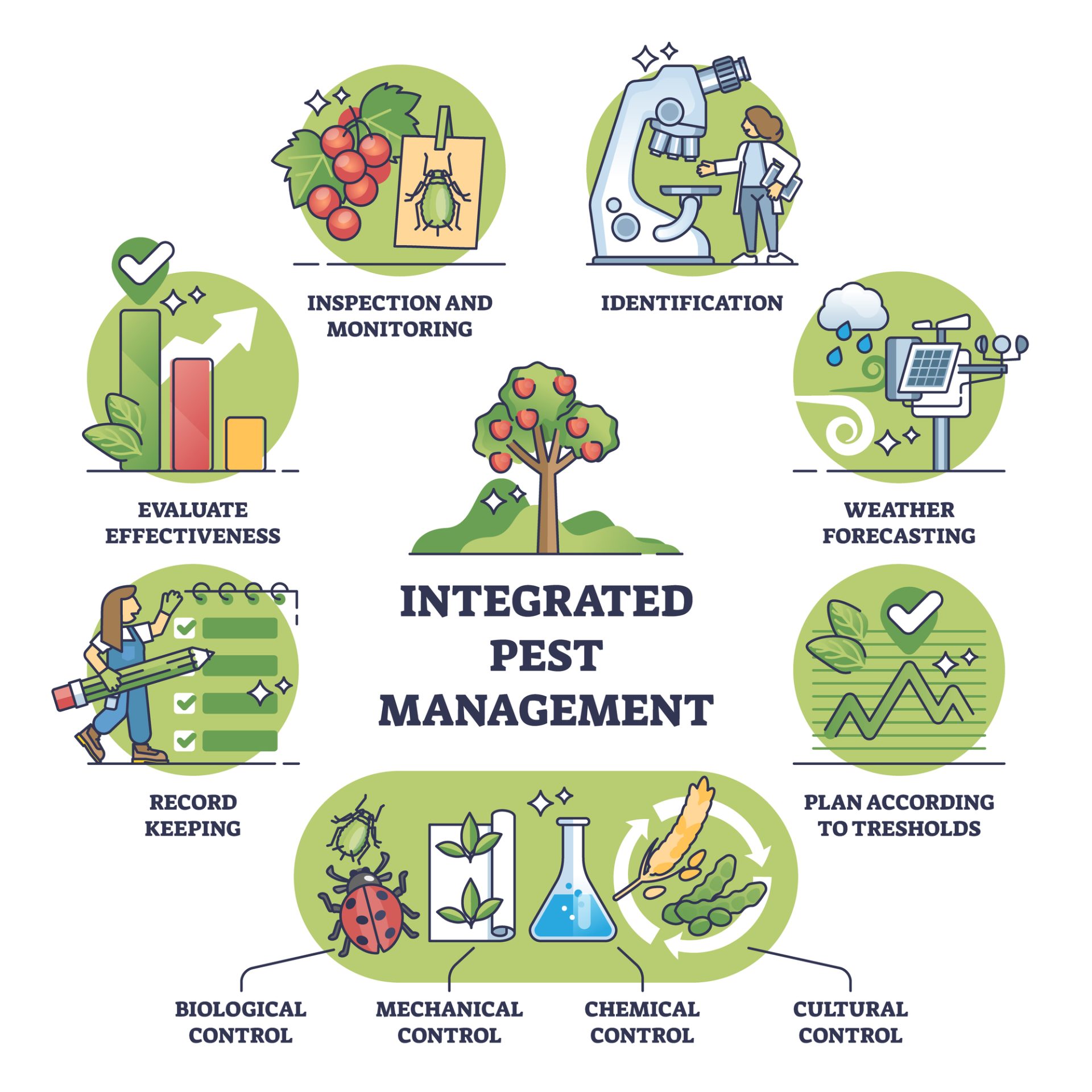
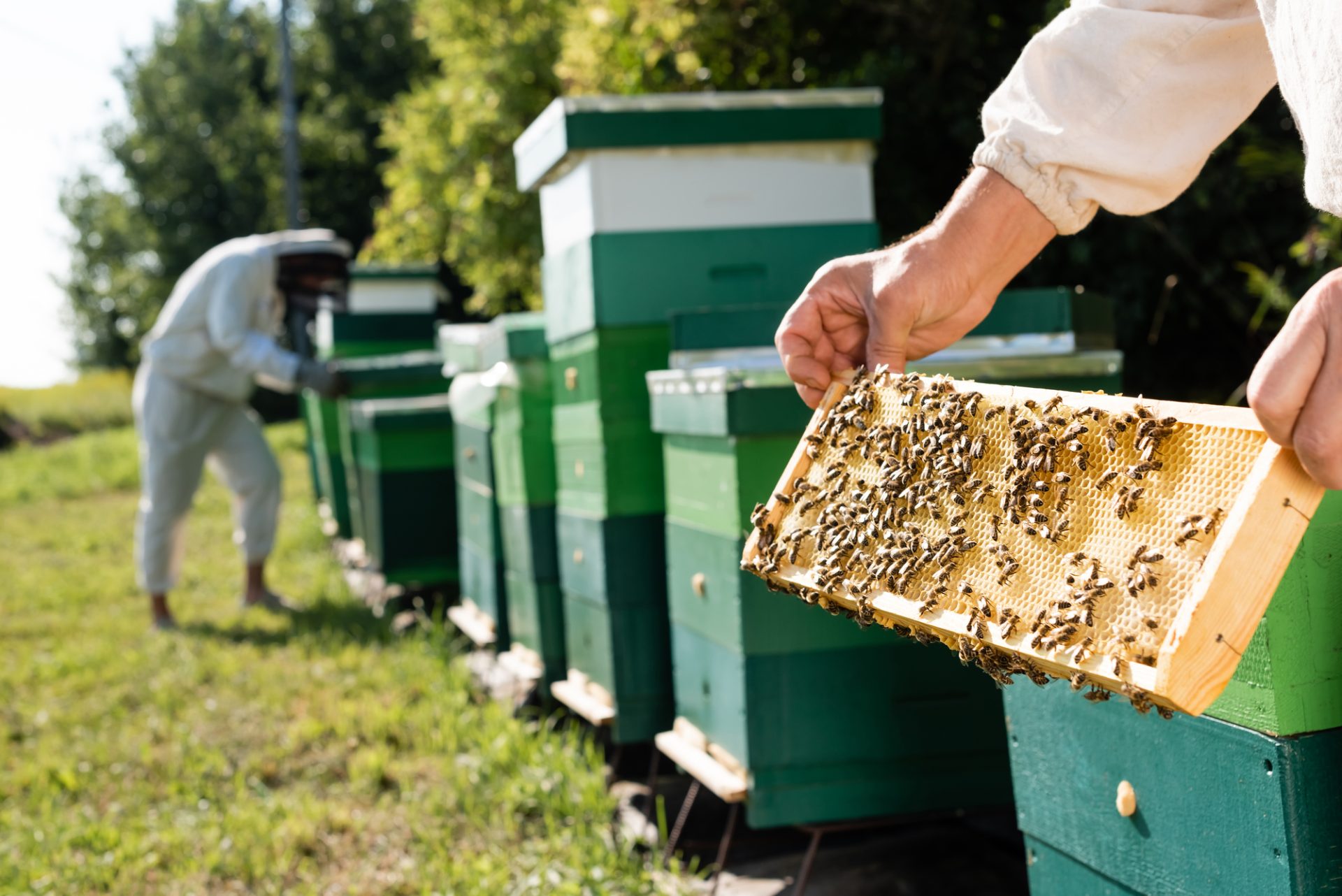
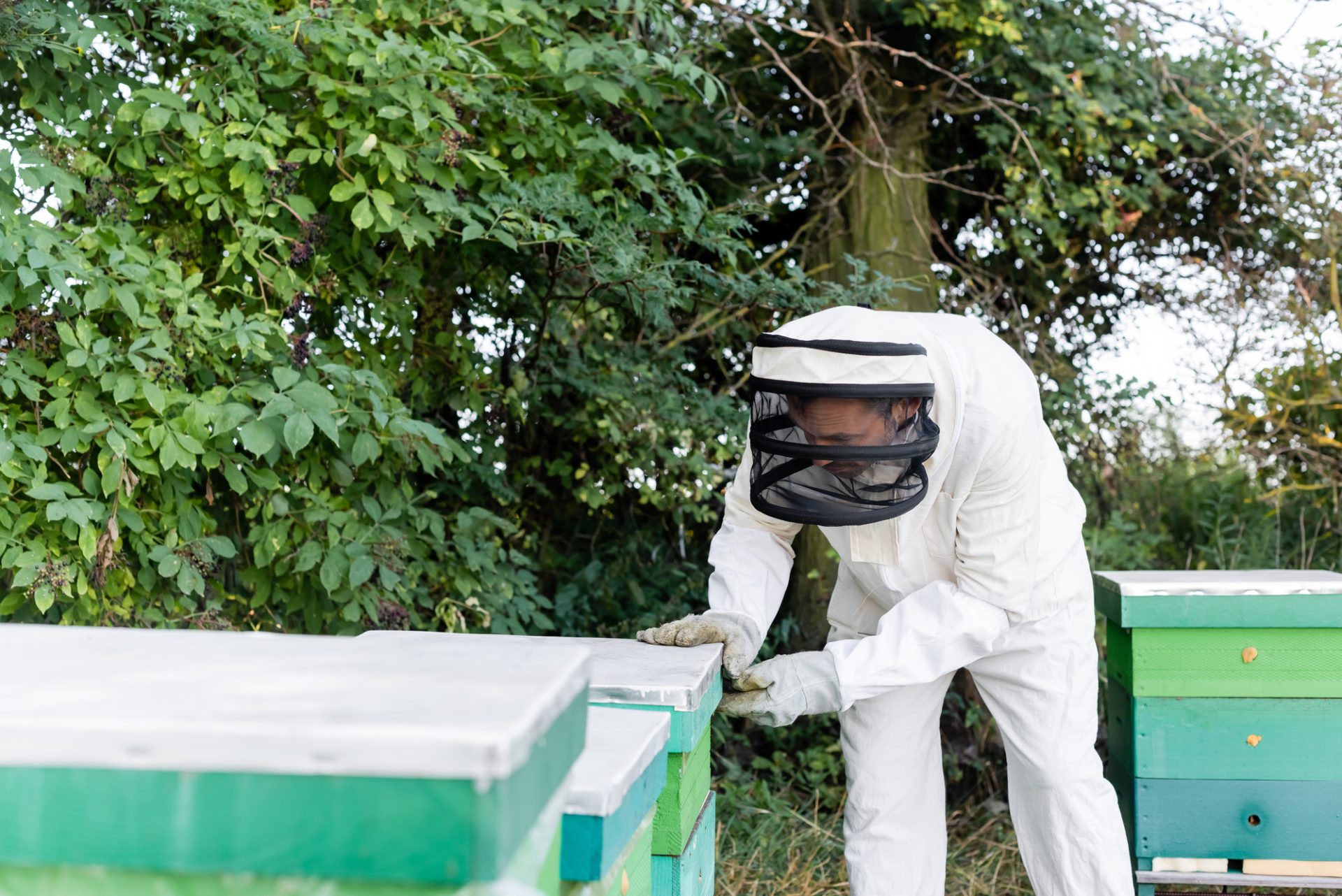
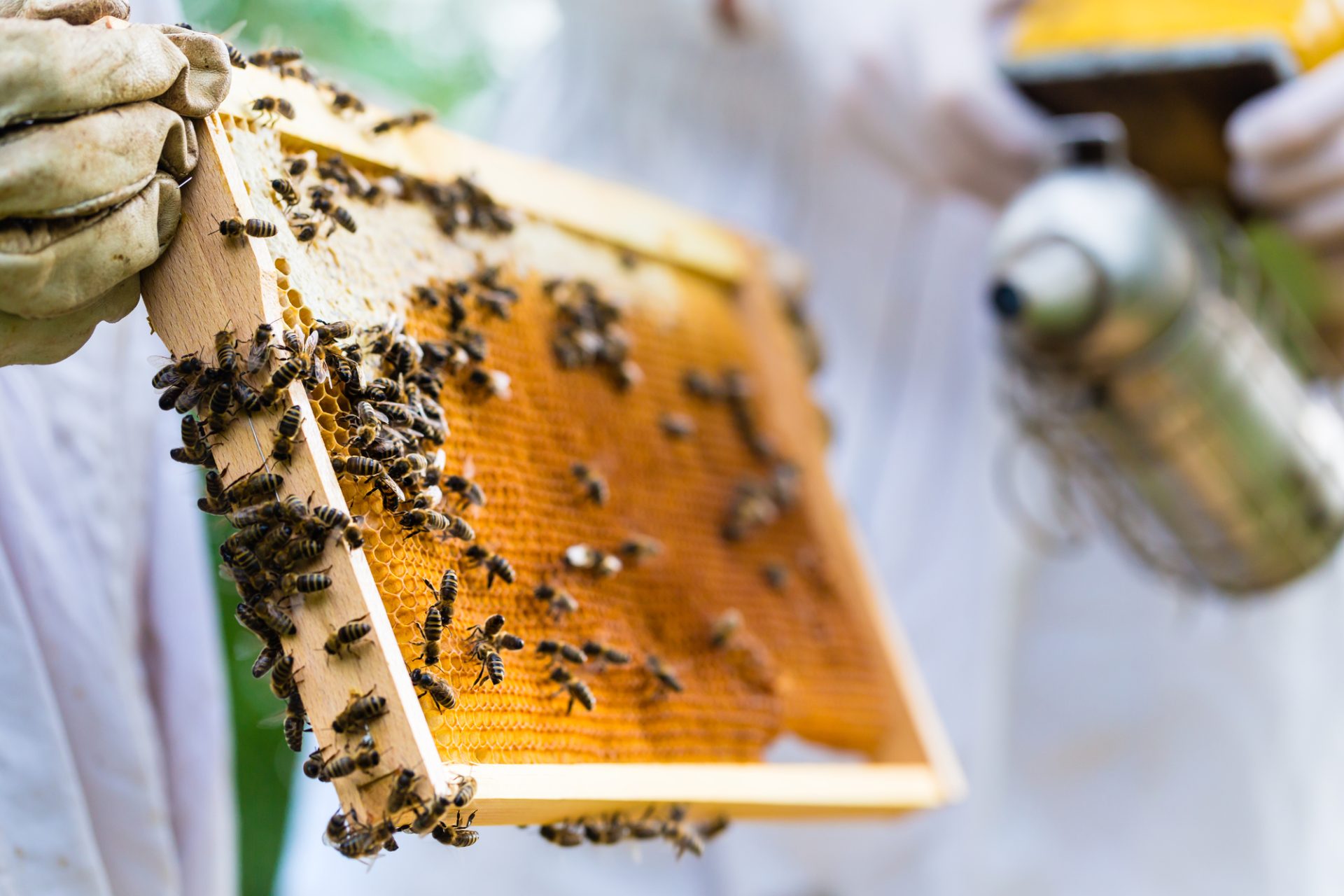
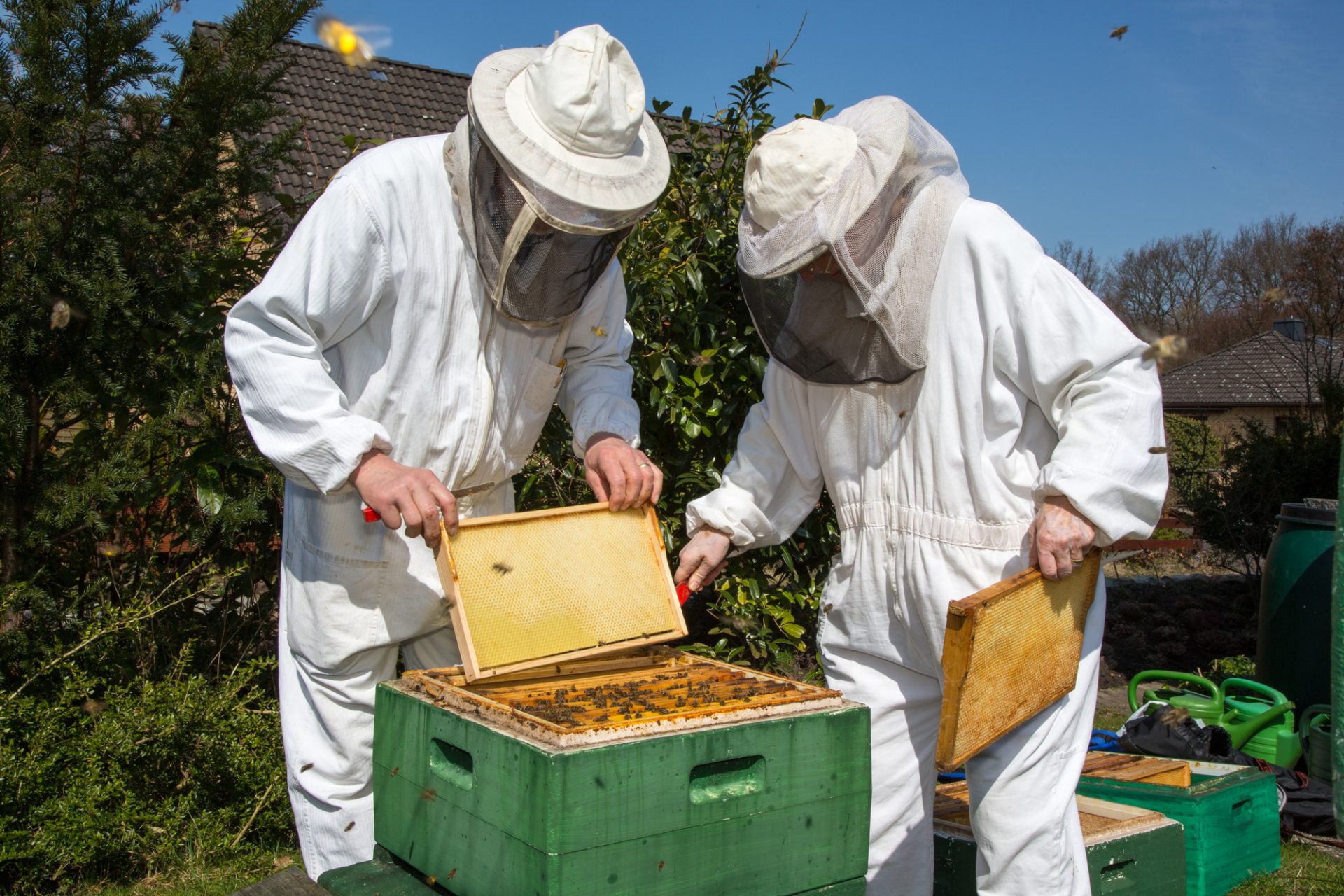
[…] practices in pest and illness control, together with an built-in pest control machine, are inspired. Beekeepers must care for just right hygiene to steer clear of unsightly […]